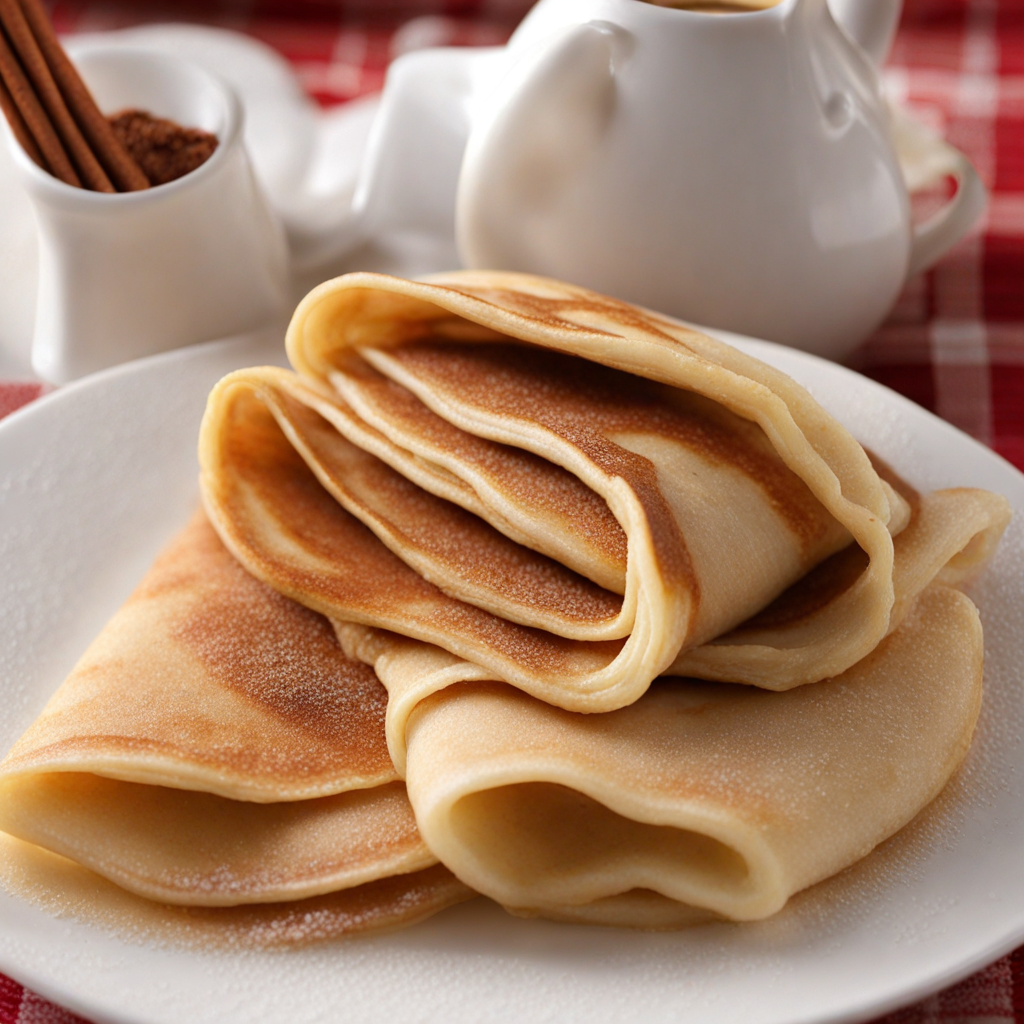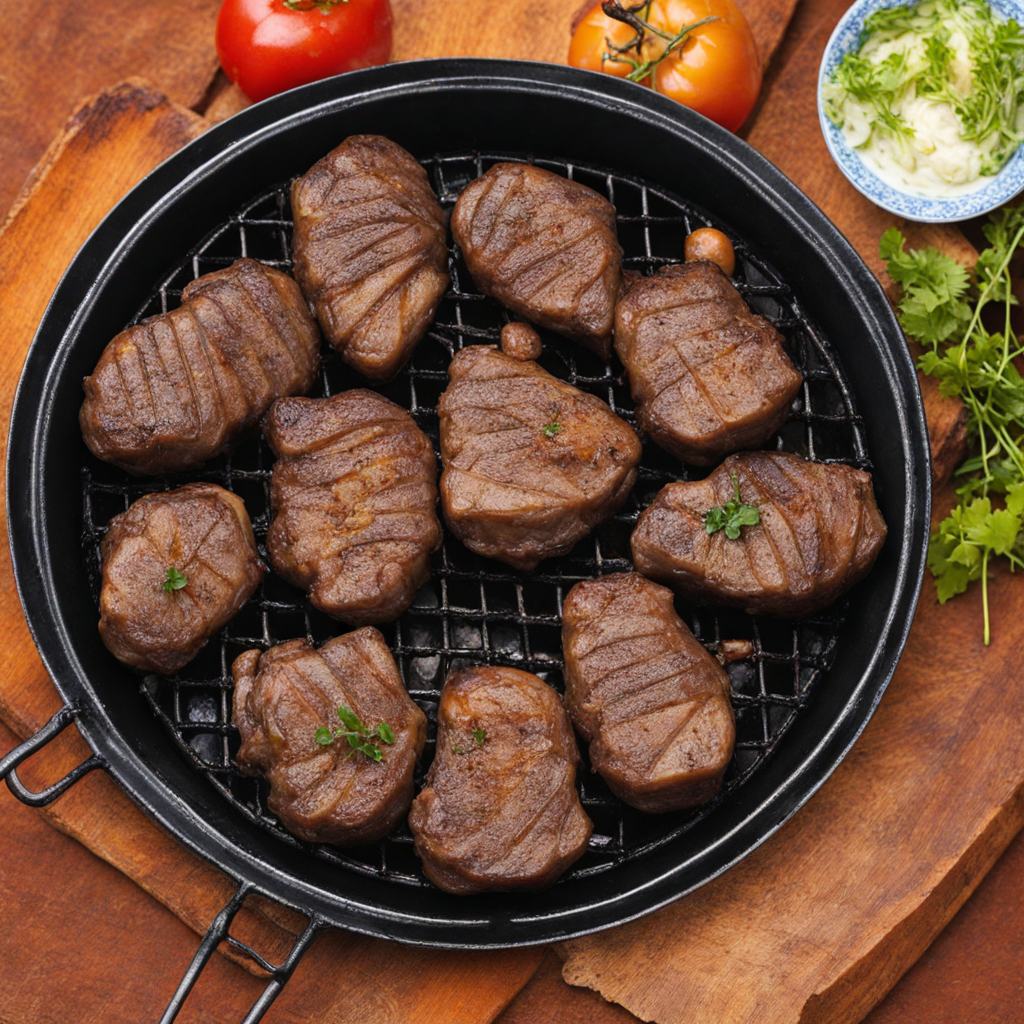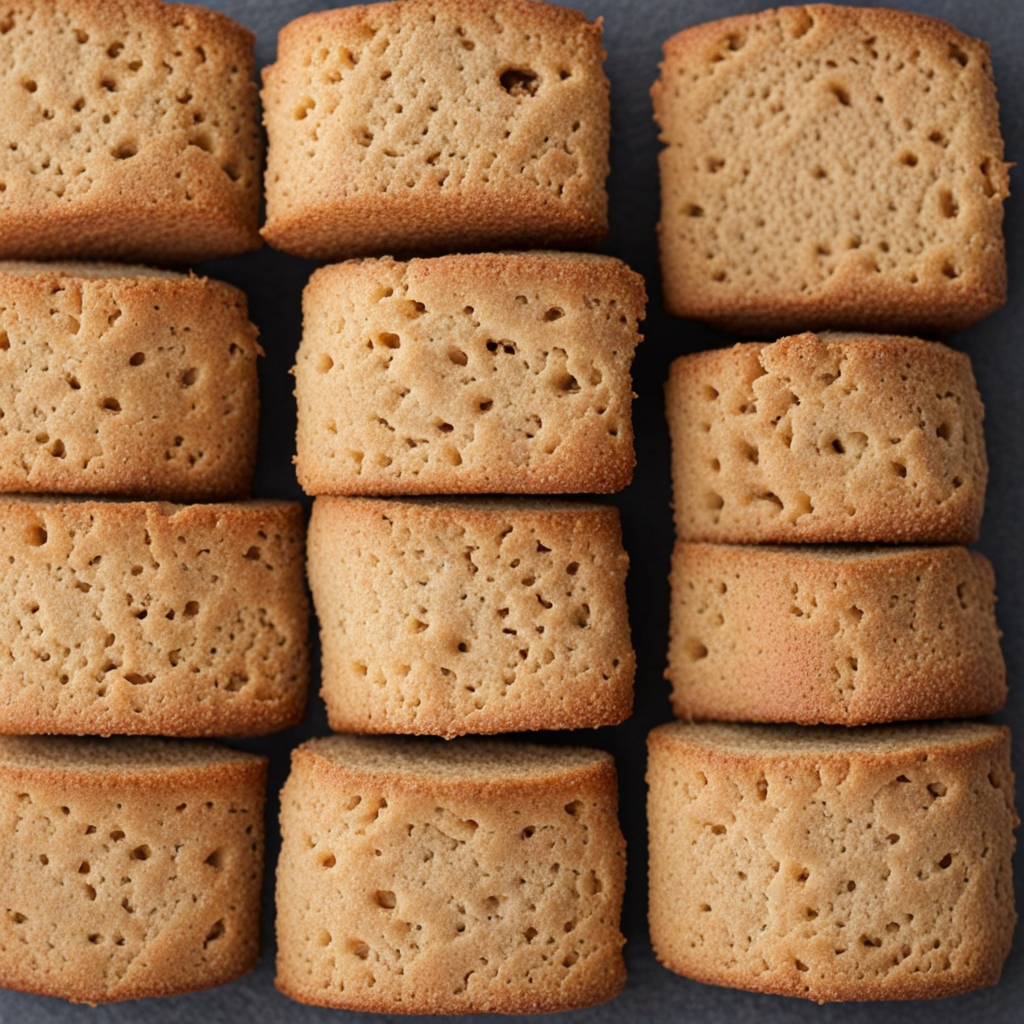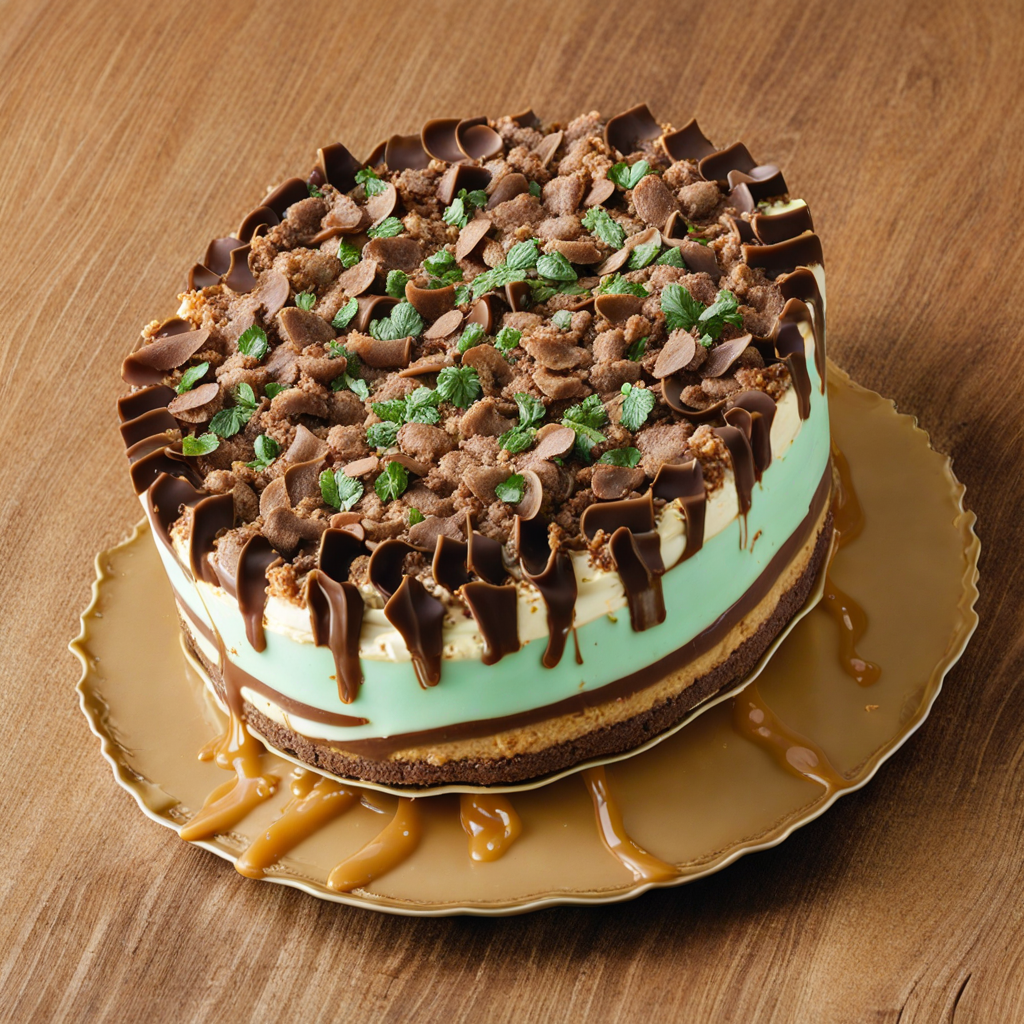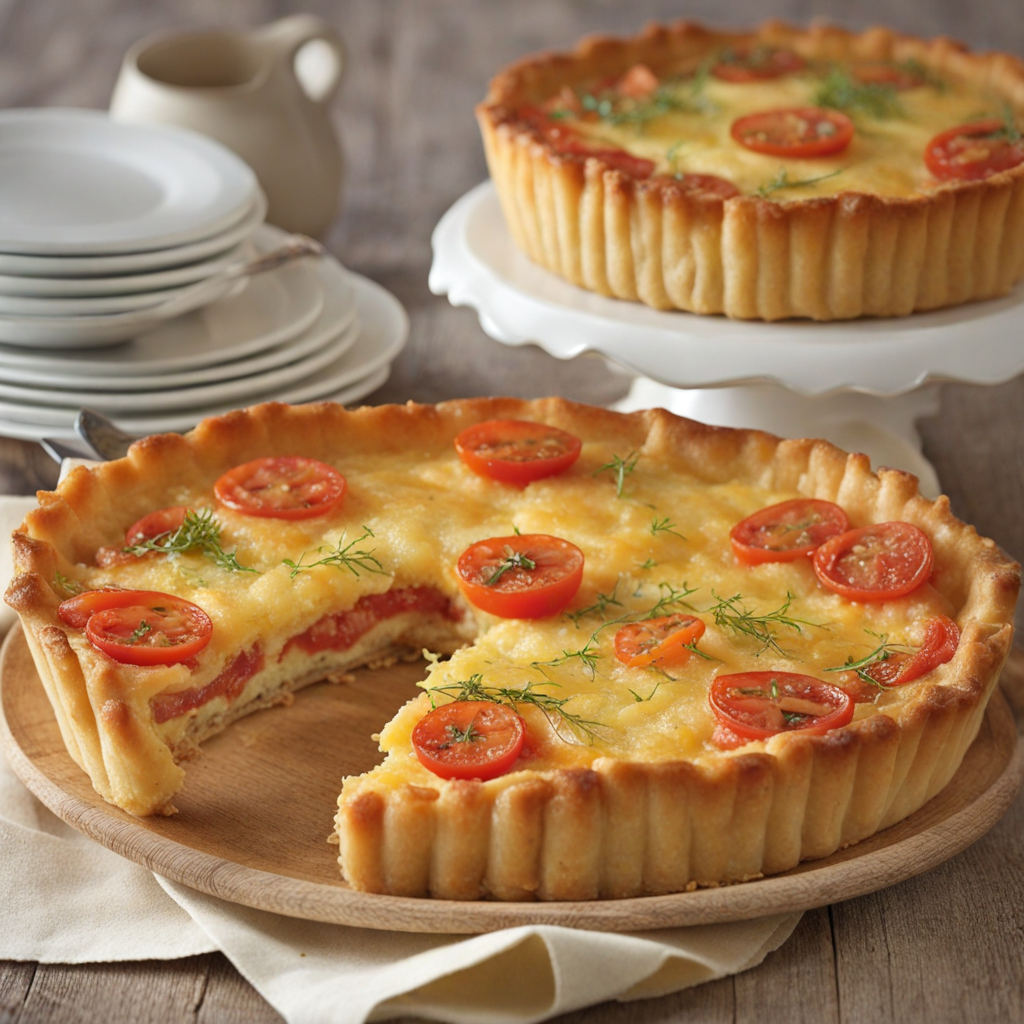Pannekoek
Pannekoek, a delightful South African treat, is a thin, pancake-like dish that beautifully blends the influences of Dutch cuisine with local flavors. These soft and tender pancakes are typically made from a simple batter of flour, milk, eggs, and a pinch of salt, resulting in a delicately textured base that can be enjoyed in a multitude of ways. Traditionally served as a breakfast or dessert item, pannekoek is often accompanied by sweet toppings such as syrup, sugar, or fresh fruit, making it a versatile option for any time of day. What sets pannekoek apart is its ability to embrace both sweet and savory fillings, allowing for a custom dining experience. Popular fillings include cinnamon sugar, jam, and whipped cream for those with a sweet tooth, while savory options like cheese, mushrooms, or even spiced meats can provide a more hearty meal. This flexibility makes pannekoek a beloved dish among families, often enjoyed during gatherings or special occasions, where each person can create their own flavor combination. The experience of enjoying pannekoek extends beyond just taste; it is also about the communal aspect of preparing and sharing this dish. Cooking these pancakes is often a family affair, where the batter is poured onto a hot skillet, and everyone eagerly awaits the transformation into golden, fluffy rounds. Once cooked, they are rolled up or folded, showcasing their delectable fillings, and served warm. The delightful aroma, coupled with the anticipation of the first bite, makes pannekoek a cherished culinary experience that encapsulates the warmth and vibrancy of South African culture.
How It Became This Dish
The History of Pannekoek: A South African Delight Introduction Pannekoek, often referred to as South African pancakes, is a beloved dish that has become an integral part of the culinary landscape of South Africa. With its roots steeped in Dutch heritage, it evokes memories of family gatherings, festive celebrations, and the warm embrace of home cooking. This culinary gem has evolved through generations, reflecting the diverse influences that have shaped South African cuisine. Origins: A Dutch Influence The story of pannekoek begins in the 17th century, with the arrival of Dutch settlers, known as the Afrikaners, in what is now South Africa. These settlers brought with them a wealth of culinary traditions from the Netherlands, including the pancake, or "pannekoek." In Dutch culture, pancakes are thin, crêpe-like delicacies that can be served both sweet and savory. The word "pannekoek" itself is derived from the Dutch words "pan" (pan) and "koek" (cake), which together describe a cake cooked in a pan. As the Afrikaners established farms and communities, they adapted their culinary practices to the local environment and available ingredients. The traditional pannekoek began to evolve, incorporating local flavors and ingredients, such as maize and fruits, which were abundant in the region. This adaptation was not only a reflection of the settler's resourcefulness but also laid the groundwork for what would become a distinctly South African version of the beloved pancake. Cultural Significance Pannekoek holds a cherished place in South African culture, symbolizing warmth, hospitality, and togetherness. It is a versatile dish that transcends the boundaries of class and ethnicity, enjoyed by both rural communities and urban dwellers alike. Often served at family gatherings, birthdays, and festive occasions, pannekoek is more than just food; it is a part of the social fabric that brings people together. In Afrikaans culture, pannekoek is traditionally served with a variety of sweet toppings, such as syrup, sugar, or jam, and can be filled with fresh fruit, chocolate spread, or whipped cream. In contrast, savory variations have also emerged, featuring fillings like cheese, mushrooms, or even curried vegetables, reflecting the diverse culinary influences of South Africa's many cultures. The dish also plays a role in significant cultural events. During religious festivities, such as Easter and Christmas, pannekoek may be prepared as a special treat, often served alongside traditional dishes. The act of making pannekoek can be a communal activity, with families gathering in the kitchen to whip up batches of the thin pancakes, fostering bonds and creating memories. Development Over Time As South Africa's culinary landscape continued to evolve, so too did the pannekoek. The late 19th and early 20th centuries saw a significant shift in dietary practices, influenced by globalization and urbanization. The introduction of new ingredients, such as baking powder and refined sugar, altered the texture and taste of the pannekoek, making it lighter and sweeter. Additionally, the availability of non-stick frying pans revolutionized the cooking process, allowing for more consistent results and making the preparation of these pancakes more accessible. The rise of the apartheid regime and the subsequent social changes in the late 20th century also impacted South African cuisine. As people from various cultural backgrounds began to interact more closely, there was a fusion of culinary traditions. Pannekoek began to incorporate flavors and techniques from other ethnic cuisines, resulting in an exciting array of savory fillings and toppings, such as spiced lentils or chakalaka (a spicy vegetable relish). In contemporary South Africa, pannekoek has regained popularity as a street food and café staple, often featured on menus alongside gourmet fillings and creative presentations. Chefs and food enthusiasts are experimenting with global influences, leading to innovative versions of the traditional pancake. Today, one might find pannekoek filled with exotic ingredients like avocado, smoked salmon, or even pulled pork, showcasing the dish's versatility and adaptability. Pannekoek Today: A Culinary Celebration The modern-day pannekoek is a true representation of South Africa's rich culinary heritage—a perfect blend of tradition and innovation. This dish has become a canvas for chefs and home cooks alike, allowing them to express their creativity and cultural identities. Food festivals and markets often feature pannekoek stands, celebrating local flavors and the spirit of togetherness that the dish embodies. Social media has also played a role in the resurgence of pannekoek culture, with food bloggers and influencers showcasing their unique takes on this classic. From sweet to savory, the variations are endless, and the pancake is often dressed up with artisanal ingredients, elevating it to a modern culinary experience. Many South Africans take pride in sharing their family recipes, which have been passed down through generations, ensuring that the tradition of making and enjoying pannekoek continues. Conclusion Pannekoek is more than just a pancake; it is a symbol of South African culture, reflecting the country's rich history and diverse influences. From its Dutch origins to its status as a beloved comfort food, pannekoek has woven itself into the hearts and homes of South Africans. As it continues to evolve, the dish remains a delicious testament to the power of food in fostering connections, celebrating heritage, and embracing the ever-changing tapestry of culinary traditions. Whether enjoyed sweet or savory, pannekoek will always hold a special place in the culinary canon of South Africa—a delightful reminder of the past, present, and future of this vibrant nation's food culture.
You may like
Discover local flavors from South Africa


